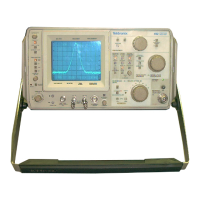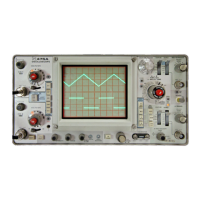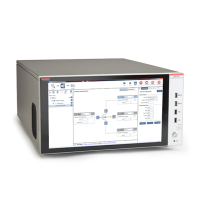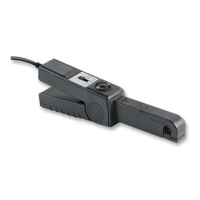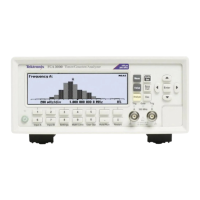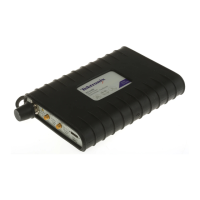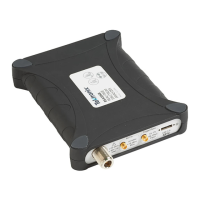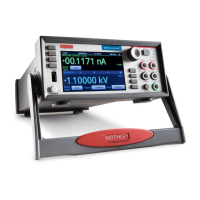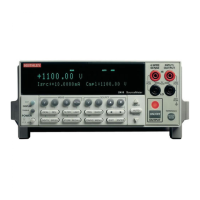The back bias across D1116 is controlled by INT REF FREQ
control R1106. This change in back bias increases or de-
creases the diode capacity and shifts the resonant frequency
of crystal Y1104. The pulling range on the crystal frequency
by the INT REF FREQ control is about 1 kHz. This is sufficient
to maintain phase lock condition through frequency gaps
that occur above 1 GHz when the oscillator shifts phase lock
mode,
When the local oscillator shifts to a different lock mode,
the fundamental frequency of the oscillator shifts 1 MHz.
This produces frequency gaps in the upper scales which will
shift the signal off screen with dispersions of 100 kHz/div
or less. The INT REF FREQ control shifts the reference
oscillator frequency about 0.1% (1 kHz). This shifts the local
oscillator by the same percentage, so the frequency gaps
between lock modes are filled. If the observed signal should
shift off screen, it can be returned on screen or slid along
the display by the INT REF FREQ control.
The pulse generator consists of tunnel diode D1124, driving
amplifier Q1120. The quiescent current of tunnel diode
D1124 is approximately 2.5 mA. The positive-going portion
of the input reference signal switches the tunnel diode to its
high state and a fast rise positive pulse is generated. The
pulse is amplified and differentiated by Q1120 and the short
RC time constant in the emitter circuit.
The output pulse of Q1120 is transformer coupled through
T1128 to Q1121. The positive portion of the coupled pulse
is of sufficient amplitude to trigger Q1121 into avalanche,
and the resulting collector current sweeps out the stored
charge of diodes
D1134 and D1139. When the charge has
dissipated, the diodes generate a fast recovery step. This
recovery step is differentiated and coupled through trans-
mission line transformer T1140, T1150 and T1160 to the phase
detector as a series of equal amplitude positive and negative
strobe pulses.
The phase detector (Fig. 3-4) consists of a two diode
gate and a low pass filter network. The diode gate is turned
on by the combined application of the local oscillator signal
and the very narrow strobe pulses, During the on time, the
phase detector samples the amplitude and phase of the local
oscillator signal and develops a voltage at the output of
the filter (C, and the junction of R
1
, R
2
) that approximately
equals the instantaneous value of the local oscillator signal.
The sample of the local oscillator signal has a finite width
determined by the duration of the strobe pulse. The phase
detector operates on either the positive or negative slope
of the local oscillator signal, depending on the total dif-
ference between the detector output voltage and the phase
of the local oscillator signal. The strobe pulse width, there-
fore, must not exceed one-half period of the highest local
oscillator input frequency, which is 4.2 GHz. This period is
0.21 ns.
If the input local oscillator frequency is not a harmonic
of the reference frequency, the output of the phase detector
is approximately zero.
However, as the local oscillator
frequency approaches a harmonic of the reference frequency,
an AC or beat frequency signal is developed at the detector
output. This is amplified and applied through the LOCK
Fig. 3-3. Phase lock block diagram.
3-4

